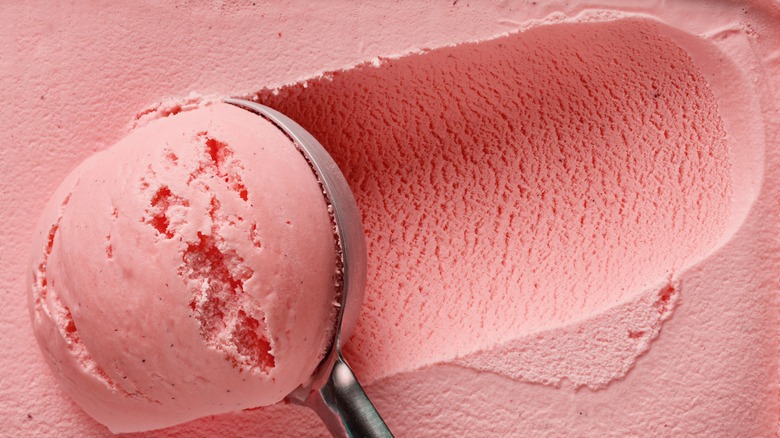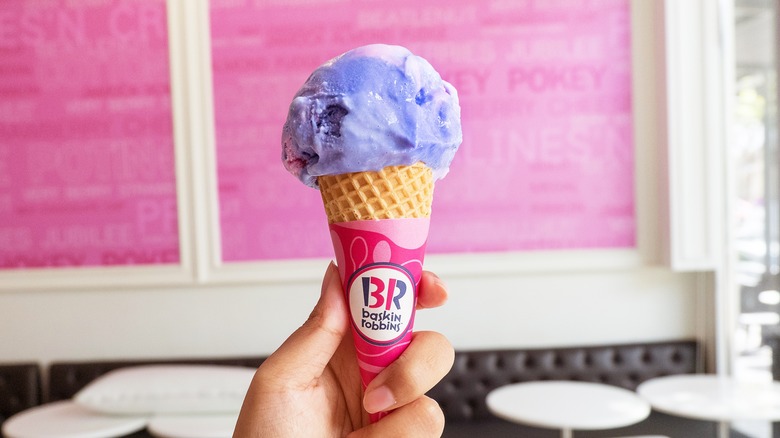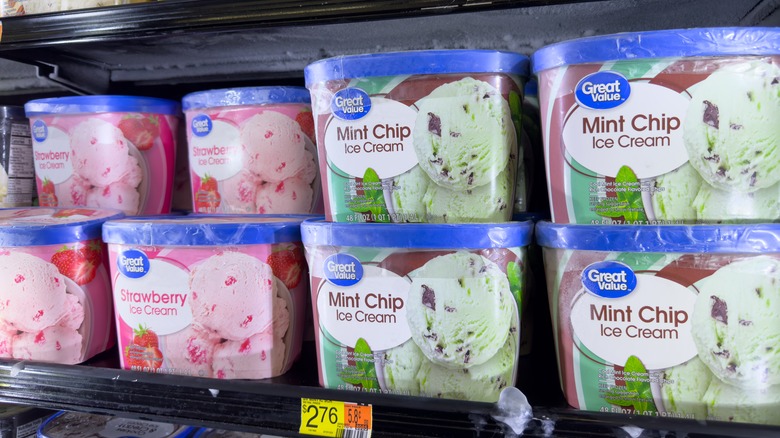The Iconic Ice Cream Brand With A Disappointing Ingredient List
When it comes to ice cream, there are some big names everyone will recognize: Ben & Jerry's, Häagen-Dazs, Breyer's, just to name a few. But there's one that's been synonymous with ice cream shops for decades, a brand that first became famous for its 31 flavors, one for each day of the month: Baskin-Robbins, the company that appeals to childhood nostalgia. It was the first big brand to expand past just a few flavor options, even if some of those eccentric Baskin-Robbins flavors never made it to store shelves.
Unfortunately, when you look at the ingredient list today, the findings can be less than ideal. Ice cream brands vary in ingredient quality, but Baskin-Robbins is on the lower end of that spectrum. Like many other brands, Baskin-Robbins makes use of food colorings like Blue 1, but it's more than just dyes — the company also utilizes various different gums, high fructose corn syrup, vegetable oils, and other undesirable ingredients.
There are a bunch of problematic ingredients in Baskin-Robbins
Several of these ice cream ingredients are perhaps not what you'd want to be eating given the choice. Studies exist that indicate Blue 1 may have toxic effects on humans, and may have associations with the development of ADHD. Guar gum, a key part of the company's stabilizer-emulsifier blend, may cause digestive issues like bloating and potential allergic reactions, and Baskin-Robbins uses it in 21 different flavors.
Six different flavors, meanwhile, make use of high fructose corn syrup, which can contribute to heart disease and diabetes. Vegetable oil isn't as potentially bad for health as some of these other ingredients, but it's also typically used as a cheaper alternative to actual milk fat — and several of Baskin-Robbins' flavors use palm oil specifically, which is heavily linked to deforestation.
It's important to note, however, that Baskin-Robbins isn't uniquely bad here; a bunch of major ice cream brands have ingredient lists that are, at best, questionable. Some of Baskin-Robbins' choices, meanwhile, are actually better than some competitors, such as using red beet concentrate for color in its cotton candy flavor instead of red dyes.
Some other brands aren't much better
Many of Baskin-Robbins' competitors are significantly worse when it comes to ingredients. In addition to dyes like Blue 1, Blue Ribbon uses Yellow 5, which has been found to contain carcinogens, as well as being linked to hypersensitivity. Ditto for Blue Bunny, which also uses dyes like Red 40 (likewise potentially carcinogenic), numerous stabilizing gums, and artificial flavors. Halo Top is known for being a low-calorie ice cream option, but it makes use of things like cellulose gel and cellulose gum which aren't harmful to your health, but are generally used as fillers. At least one Turkey Hill flavor contains sorbitol, a sweetener which can sometimes cause digestive issues. And probably no one will be surprised by the fact Great Value ice cream flavors not only utilize high fructose corn syrup, guar gum, and sorbitol, but also contains carrageenan, which may have links to colon cancer.
So while Baskin-Robbins' ingredient lists aren't the best out there, they're also not the worst. If you're concerned about any of these possible health risks, you still might be better served reaching for a brand that makes use of more natural ingredients.


